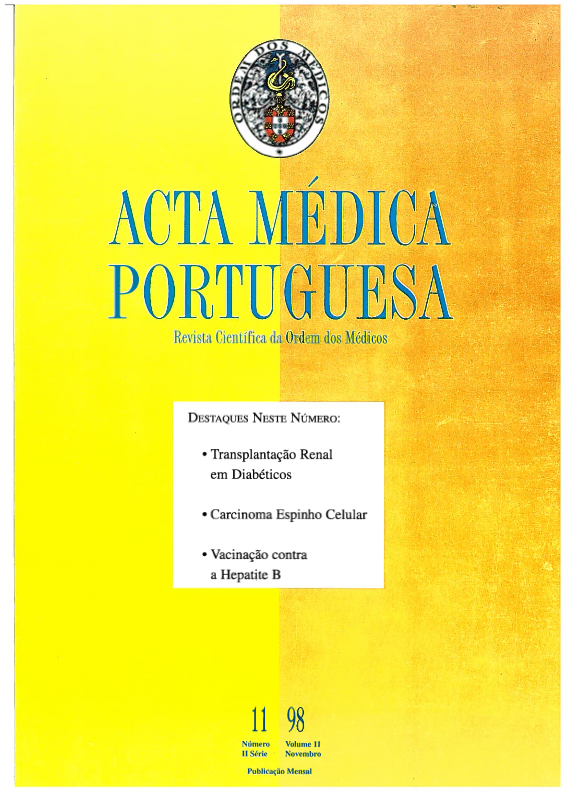Prevenção secundária do acidente vascular cerebral.
DOI:
https://doi.org/10.20344/amp.2338Resumo
The guidelines for secondary stroke prevention, graded following available scientific evidence, are presented. Stroke and TIA are defined and the indications for referral established. Basic assessment of stroke patients should include laboratory evaluation, ECG, brain CT, ultrasound examination of the extracranial vessels for events in the carotid distribution, and transthoracic or transesophageal echocardiogram if cardioembolism is suspected. The pharmacological and non-pharmacological reduction of blood pressure and serum cholesterol, stopping smoking and reducing alcohol intake are general measures recommended for secondary stroke prevention, together with healthier life-style changes (eating a Mediterranean type diet and performing regular moderate physical exercise). Concerning antithrombotic therapy, oral anticoagulants are recommended for patients with atrial fibrillation and other high to medium emboligenic cardiac risk conditions. Antiplatelet drugs are recommended for all other survivors of an ischemic cerebral event. Aspirin (75-325 mg/day) is the drug of choice. Alternative antiplatelet agents are clopidrogrel, ticlopidine, dipiridamol or triflusal. They can be used in patients with intolerance or contraindication to aspirin or in high-risk subjects. Endarterectomy of the symptomatic carotid is an additional procedure recommended for patients with ischemic stroke or TIA and carotid stenosis > 80% on the side of the symptomatic cerebral hemisphere.Downloads
Downloads
Como Citar
Edição
Secção
Licença
Todos os artigos publicados na AMP são de acesso aberto e cumprem os requisitos das agências de financiamento ou instituições académicas. Relativamente à utilização por terceiros a AMP rege-se pelos termos da licença Creative Commons ‘Atribuição – Uso Não-Comercial – (CC-BY-NC)’.
É da responsabilidade do autor obter permissão para reproduzir figuras, tabelas, etc., de outras publicações. Após a aceitação de um artigo, os autores serão convidados a preencher uma “Declaração de Responsabilidade Autoral e Partilha de Direitos de Autor “(http://www.actamedicaportuguesa.com/info/AMP-NormasPublicacao.pdf) e a “Declaração de Potenciais Conflitos de Interesse” (http://www.icmje.org/conflicts-of-interest) do ICMJE. Será enviado um e-mail ao autor correspondente, confirmando a receção do manuscrito.
Após a publicação, os autores ficam autorizados a disponibilizar os seus artigos em repositórios das suas instituições de origem, desde que mencionem sempre onde foram publicados e de acordo com a licença Creative Commons









